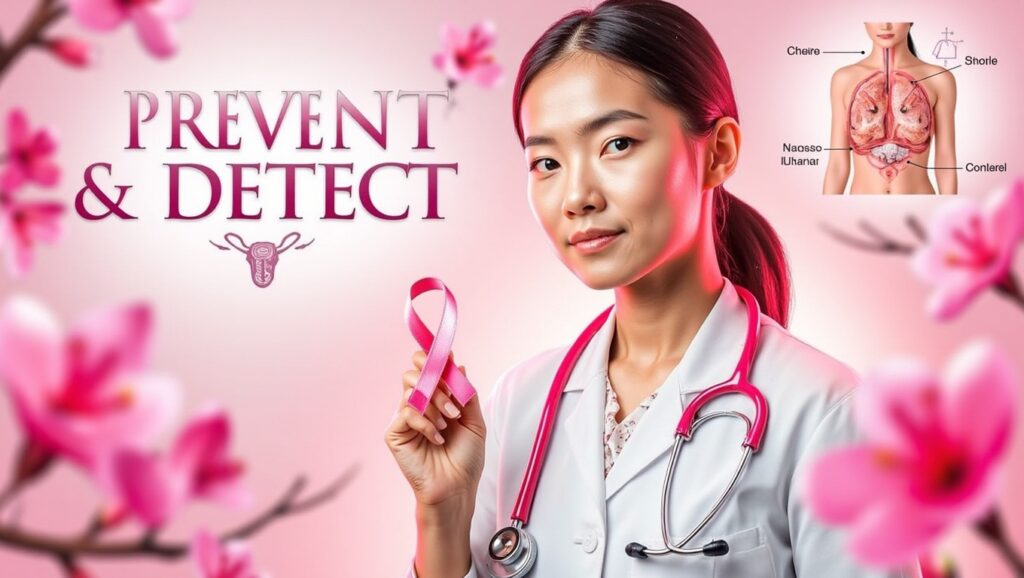Breast cancer prevention starts with awareness. Learn about self-examination, symptoms, risk factors, and effective prevention methods to protect your health.

Introduction
Breast cancer remains one of the most common cancers among women worldwide. Awareness of its symptoms, risk factors, and prevention strategies is vital for early detection and successful treatment. By prioritizing regular self-examinations and understanding the steps to reduce risks, you can take charge of your breast health and well-being.
What is Breast Cancer and How Does It Develop?
Breast cancer occurs when abnormal cells in the breast grow uncontrollably, forming a tumor. These cancerous cells can spread to other parts of the body through the lymphatic system or bloodstream.
There are several types of breast cancer, with ductal carcinoma in situ (DCIS) and invasive ductal carcinoma being the most common. DCIS is non-invasive and confined to the ducts, while invasive types can spread to surrounding tissues. Understanding these distinctions helps in tailoring treatment options effectively.
Risk Factors: Who is Most Likely to Develop Breast Cancer?
Certain factors increase the likelihood of developing breast cancer. These include:
- Age: The risk rises as women grow older, particularly after age 50.
- Family History and Genetics: Mutations in the BRCA1 and BRCA2 genes significantly increase risk.
- Lifestyle Factors: Smoking, excessive alcohol consumption, and obesity can contribute.
- Hormonal Factors: Early menstruation (before age 12) or late menopause (after age 55) may elevate risk.
While some factors, like genetics, are unavoidable, lifestyle changes can significantly reduce overall risk.
Breast Cancer Symptoms: How to Identify the First Changes?
The first signs of breast cancer are often subtle, making regular self-examination critical. Common symptoms include:
- A lump or thickening in the breast or underarm area.
- Changes in breast size or shape.
- Nipple discharge or inversion.
- Skin changes, such as dimpling or redness.
Performing a monthly self-examination allows women to identify any abnormalities early. If you notice unusual changes, consult a healthcare provider promptly.
Diagnosis: What Tests Are Used to Confirm Breast Cancer?
Several diagnostic tools help detect and confirm breast cancer:
- Mammography: An X-ray that identifies tumors too small to feel.
- Ultrasound: Useful for distinguishing between solid masses and fluid-filled cysts.
- MRI: Provides detailed imaging for high-risk patients or ambiguous results.
- Biopsy: Involves removing tissue for laboratory analysis to confirm the presence of cancer cells.
Regular screenings, especially for women over 40, are key to catching breast cancer early, when treatment is most effective.
Available Treatments: Which is the Best Option for Each Case?
Breast cancer treatment varies based on the type, stage, and individual circumstances. Common options include:
- Surgery: Removes the tumor; may involve a lumpectomy or mastectomy.
- Chemotherapy: Uses drugs to kill cancer cells or stop their growth.
- Radiation Therapy: Targets cancer cells with high-energy rays.
- Hormone Therapy: Blocks hormones that fuel certain types of breast cancer.
A multidisciplinary approach ensures personalized treatment plans for the best possible outcomes.
Prevention: How to Reduce the Risk of Developing Breast Cancer?
Preventive measures empower women to lower their risk of breast cancer. Key tips include:
- Maintain a Healthy Weight: Obesity is a significant risk factor.
- Regular Exercise: Physical activity reduces estrogen levels, lowering risk.
- Limit Alcohol Consumption: Alcohol is linked to increased breast cancer risk.
- Breastfeed When Possible: Breastfeeding has a protective effect against cancer.
- Vaccinate Against HPV: While primarily associated with cervical cancer, HPV vaccination can support overall health.

Life After Cancer: Challenges and Overcoming
Surviving breast cancer is a significant achievement, but it often comes with physical, emotional, and social challenges. Common post-treatment issues include:
- Fatigue and physical recovery.
- Anxiety about recurrence.
- Adjusting to body image changes after surgery.
Support groups, therapy, and open communication with loved ones can help survivors rebuild confidence and quality of life.
Conclusion
Breast cancer awareness saves lives. By recognizing symptoms, performing regular self-examinations, and adopting preventive measures, women can take proactive steps toward their health.
Regular screenings and a healthy lifestyle are powerful tools in reducing risk and detecting breast cancer early. Stay informed, act early, and support initiatives that promote awareness and research—because every effort counts in the fight against breast cancer.
Oropharyngeal Cancer: A Silent Threat with Increasing Prevalence
See more about types of Cancer


Pingback: Prostate Cancer after 50: prevention of prostate cancer - stay healthy today